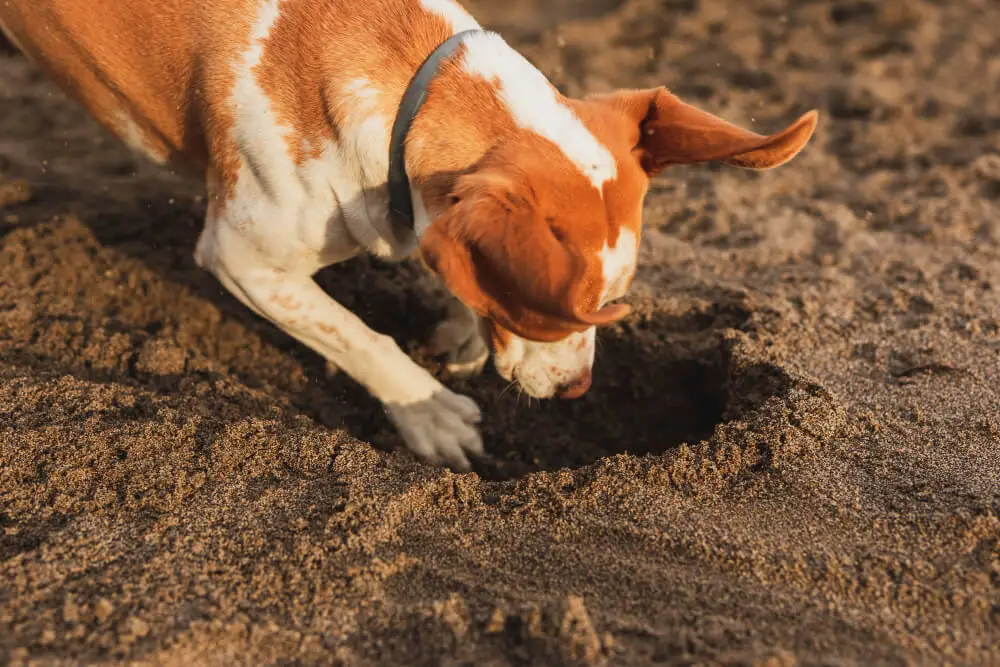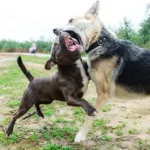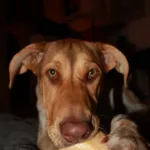As dog owners, we pay close attention to our furry friend’s health and well-being. So, when we notice any changes in their poop, it can be a cause for concern. One such change that may raise questions is the presence of small yellow balls in your dog’s poop. Let us explore the various causes behind this phenomenon and provide potential solutions to address it. When you understand the reason behind these yellow balls, you can care for your dog better. Awareness and knowledge are crucial to ensuring your pet’s well-being.
Why Are There Small Yellow Balls in my Dog’s Poop?
These small yellow balls you may find in your dog’s poop can be quite alarming at first glance. While it’s important not to panic, this is not something to be ignored either. They may indicate a variety of issues, ranging from a simple change in diet to potential health concerns.
Why Does It Look Like There Is Corn in My Dog’s Poop?
One common reason for small yellow balls in dog poop that look like corn is undigested food particles, mainly corn. Dogs lack the necessary enzymes to break down certain components of corn effectively. So when they ingest corn, it passes through their digestive tract relatively intact. While this may initially seem alarming, it is usually nothing to worry about. However, if your dog shows other signs of discomfort and distress, you should seek medical attentin.
What Are the Egg Sacs in Dog Poop?
Another possible cause of yellow balls in your dog’s stool could be tapeworm eggs. Tapeworms are intestinal parasites that dogs can contract from ingesting fleas or infected animals. These parasites shed egg sacs that resemble tiny grains of rice and can be visible in your dog’s poop. If you suspect tapeworms as the cause, consult with your veterinarian to confirm the diagnosis and discuss appropriate treatment options.
Symptoms of Tapeworm Infestation in Dogs
Tapeworm infestations in dogs can manifest in a variety of ways. One of the most apparent signs is the presence of tapeworm segments. These segments resemble small grains of rice or yellow balls in your dog’s feces.
However, other symptoms can include:
- Weight loss despite an increase in appetite
- Dull coat,
- Abdominal discomfort
- An increase in anal itching leading your dog to ‘scoot’ across the floor on their bottom.
Dogs may also show signs of fatigue or change behavior due to discomfort. If you observe any of these symptoms in your dog, it’s essential to consult your veterinarian immediately. A vet can give a proper diagnosis and treatment plan.
The Link Between Yellow Dog Poop & Pancreatitis
Pancreatitis is a condition characterized by inflammation of the pancreas and can lead to changes in your dog’s poop color and consistency. When the pancreas becomes inflamed, it may not produce sufficient enzymes to properly digest food. Thus, resulting in undigested fat passing through the digestive system. This can manifest as yellow, greasy stools with small yellow balls or chunks.
If you are concerned that your dog may be suffering from pancreatitis or any other digestive health issue, it is best to consult with a vet. They can examine and diagnose the condition accurately and provide appropriate advice on how to care for your pet.
Signs of Pancreatitis in Dogs
Identifying pancreatitis in dogs can be a complex process as the symptoms may vary and often mimic other health conditions. However, some common signs are indicative of this condition. These typically include a sudden loss of appetite, lethargy or sluggishness, and bouts of vomiting or diarrhea.
Some dogs may also exhibit symptoms such as abdominal pain, distended abdomen, or fever. In more severe cases, dogs may experience difficulty breathing, irregular heartbeat, or even collapse. These symptoms should not be ignored. If you notice any of these signs, it’s essential to seek immediate veterinary attention. Regular physical exams and blood tests can lead to early detection and management of pancreatitis, ensuring your dog’s health and comfort.
Fat Balls in Dog Stool
Sometimes, the presence of yellow balls in your dog’s poop could be due to an excess amount of dietary fat. High-fat diets or an abrupt change in your furry friend’s food can overwhelm their digestive system and lead to undigested fat being expelled. If you suspect dietary fat is the culprit, consider adjusting your dog’s diet gradually and consult with a veterinarian for guidance on appropriate food choices.
Mustard Yellow Dog Poop Diarrhea & Treatment
Occasionally, yellow balls in your dog’s stool may be accompanied by diarrhea, resulting in mustard-yellow poop. This could indicate various underlying issues such as gastrointestinal infections, dietary indiscretion, or food allergies. It is crucial to monitor your dog for other symptoms like vomiting or loss of appetite and seek veterinary attention if the diarrhea persists or worsens.
Now that we have explored some possible causes behind the presence of yellow balls in your dog’s poop, let’s discuss potential solutions to address this issue.
Solutions for Yellow Balls in Dog Poop
In dealing with yellow balls in your dog’s poop, it’s essential to remember that solutions can vary based on the underlying cause. Whether it’s adjusting your dog’s diet, administering necessary medications, or implementing preventative measures, the strategies will differ. Here’s a closer look at some potential solutions that can help improve your dog’s digestive health and overall well-being.
Regular Worming and Flea Prevention
An essential part of pet ownership is ensuring your furry friend is adequately protected against parasites like fleas and worms. Regular use of preventative treatments can significantly reduce the risk of your dog contracting tapeworms, thereby eliminating one potential cause of yellow balls in their poop. Let’s discuss some safe and effective methods for worming and flea prevention.
Adjusting Your Dog’s Diet
If undigested food particles are the primary cause of small yellow balls in your dog’s poop, it may be helpful to review their diet. Consider switching to a high-quality dog food brand that contains easily digestible ingredients. Additionally, introducing fiber-rich foods like pumpkin or sweet potatoes may aid digestion and promote firmer stools.
Treating Tapeworm Infections
If tapeworms are responsible for the presence of egg sacs resembling yellow balls in your dog’s stool, prompt treatment is necessary. Consult with your veterinarian, who will prescribe appropriate deworming medication tailored to your dog’s needs. Additionally, ensure regular flea prevention measures are taken to minimize the risk of reinfection.
Managing Pancreatitis
If pancreatitis is causing changes in your dog’s poop, it is crucial to work closely with your veterinarian to manage the condition. Treatment may involve dietary changes, such as a low-fat diet, and medications to alleviate inflammation and support proper pancreatic function.
Gradual Food Transitions
To prevent dietary upsets that can lead to yellow balls in your dog’s stool, ensure any changes in their food are made gradually. Slowly transition from one brand or type of food to another over a week or two, mixing increasing amounts of the new food with the old until the transition is complete.
Veterinary Guidance for Diarrhea
If your dog experiences mustard-yellow diarrhea accompanied by yellow balls, it is essential to seek veterinary advice. The underlying cause needs to be determined, and appropriate treatment should be prescribed. Your veterinarian will perform diagnostic tests if necessary and guide you on how to manage your dog’s specific condition. Ensure your dog gets the right nutrition balance and stays hyrated especially when diarrheaing.
Yellow balls in dog poop can have various causes. It can be due to undigested food particles and tapeworm eggs to pancreatitis and dietary indiscretion. By understanding these potential causes and implementing appropriate solutions like adjusting their diet or seeking veterinary guidance when needed, you can help maintain your furry friend’s digestive health. Remember, regular check-ups with your veterinarian are vital for ensuring your dog’s overall well-being. Promptly address any concerns related to their stools.





